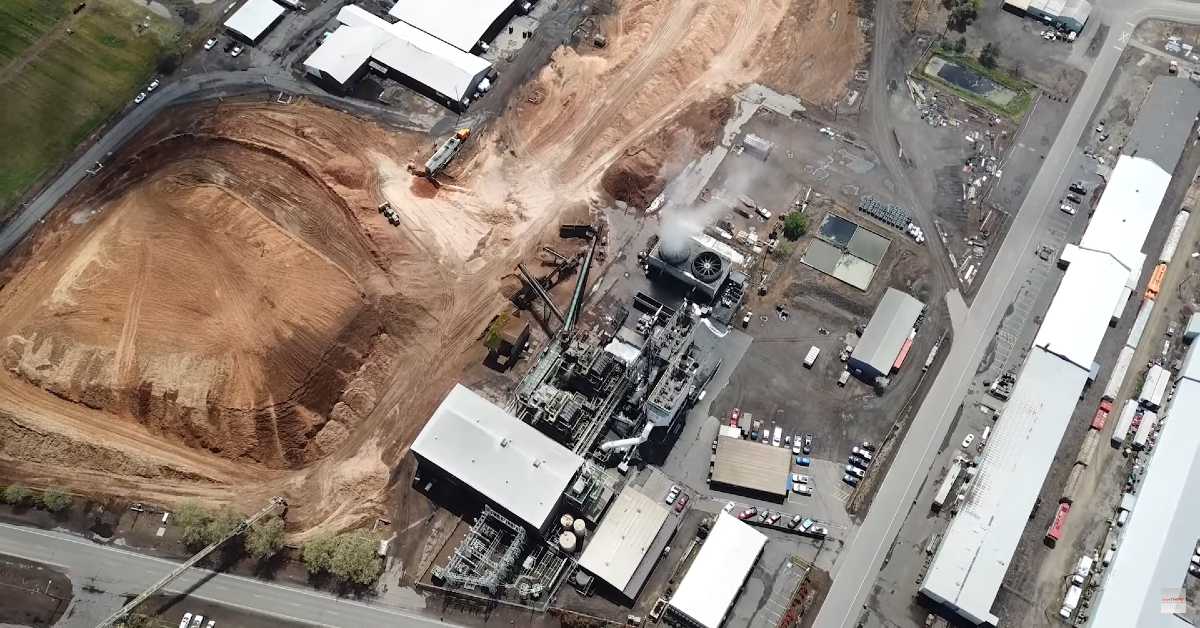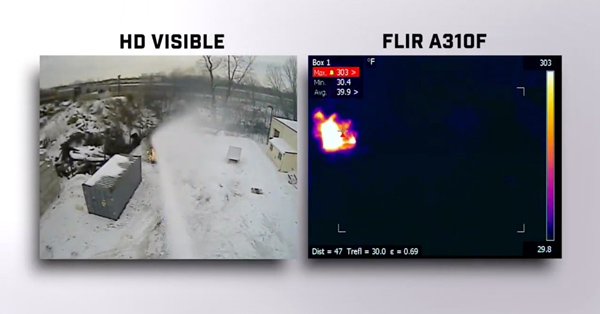MoviTherm and Biomass One Earn Fire Departments Approval with FLIR A700 Cameras
Photo Credit: MoviTherm

Biomass One is a leading biomass power plant located in White City, Oregon. The company's goal is to divert wood waste that would normally head to landfills and convert it into carbon-neutral electricity and environmental engineering substances. To supplement their fuel needs, Biomass One offers safe disposal of slash piles; loose wood debris left over from logging that can increase the risk of uncontrollable forest fires. While their services help prevent forest fires, this wood debris still carries the risk of combustion once it arrives at the Biomass One facility. It's this concern that lead Biomass One to rethink its fire management strategy.
The Challenge
On-site fire management requires highly active solutions. The threat of fire means a facility must be on constant alert and ready to put out an emergency at any given moment. Piles of woodchips can heat up on hot days and eventually combust, ruining a fuel source, creating costly losses, putting workers in danger, and requiring the fire department to get the situation under control.
Biomass One originally relied on manual, routine inspections but these took time and were inefficient. Hiring and maintaining fire watch staff was not easy as the job is monotonous; someone must stand watch for long hours and regularly walk around a pile of wooden debris for entire shifts. Even when Biomass One had staff to do the job, the occasional human error was impossible to avoid.
The Infrared (IR) Solution
Biomass One would eventually turn to an IR, or “thermal imaging” solution, arming their wood pile inspectors with hand-held thermal cameras to check for hot spots. While this showed improvement, it still carried the problems of long, manual monitoring by staff. Hoping for a more automated solution, the company turned to MoviTherm and their iEFD system.
Movitherm offers turnkey infrared thermal imaging systems for inspection, condition monitoring, and early fire detection for its customers. Their early fire detection, or iEFD, system provided the fully automated IR monitoring that Biomass One was looking for. MoviTherm’s system offers installation of FLIR fixed-mount thermal cameras that feed into their cloud-based platform, for real-time monitoring of combustible targets from a control room rather than labor intensive, manual inspections out in the field.
MoviTherm installed a series of cameras at strategic points on Biomass One’s facility, including right above their water cannons, giving them an immediate response in the event of a fire. When the cameras detect a hot spot, the control room receives an alarm and notifications are sent to the appropriate personnel. Fire monitors can then examine the feed from the cameras and take corrective action, including activating the water cannons. “With the cameras and thermal imaging concept, we can see that there is a hot spot in this pocket so we can go in and mitigate that problem right then and there.” Said Biomass One Operations Supervisor Nick Admi on a short documentary made by MoviTherm on their instillation.

Infrared camera and water cannon mounted on pole to monitor biomass fuel piles. (Photo Credit: MoviTherm)
FLIR Provides the Eyes
The eyes for MoviTherm’s total fire detection solution are FLIR A700 Smart Sensor cameras, which provide a few key features that make MoviTherm’s solution possible. When it comes to fire detection, the more pixels you can get, the better your detection will be. The FLIR A700 has a temperature sensor resolution of 640 × 480, providing a total of 307,200 pixels of temperature readings to capture every region of interest. FLIR A700 cameras are also compatible with both telephoto and wide-angle lenses, making them fit for tight indoor spaces and long-range outdoor applications.

FLIR Axxx-Series Smart Sensor Fixed-Mount Thermal Camera.
The FLIR A700 camera also includes smart detection features with on-camera analytics that offload the amount of processing needed on the back end. This is a key piece of the system that enables MoviTherm’s cloud-based fire detection and easy install. Because the cameras offer on-the-edge analytics, they remove the need for an on-site computer or a dedicated server network. The camera’s smart capabilities also enable MoviTherm to highlight multiple regions of interest in a single view.
Another advantage of the FLIR A700 is it uses non-proprietary, industry standard communication protocols such as RTSP and Modbus to make it as flexible as possible and because the A700 can stream data and run power through a single Ethernet connection, installation takes very little time. This feature eliminates the need to run power through conduit cables and offers huge savings on top of simplifying installation.
The Fire Department Approval
Before investing in iEFD solution, Biomass One asked their local fire department to assess the system. After looking at all the features MoviTherm offered, the fire department gave a resounding endorsement of its detection and fire prevention capabilities. In their own words, the fire department called it a “no brainer”, partially influenced from their own experience using infrared cameras for emergency response. This endorsement from the fire department is ultimately what led Biomass One to move forward with their purchase. Since installing the iEFD system, Biomass One hasn’t had to call the fire department a single time.
Conclusion
Biomass One successfully revolutionized their fire detection capabilities by installing MoviTherm's iEFD system—an innovative approach that significantly reduces the threat of fire and improves worker safety. The seal of approval from the local fire department is a testament to the effectiveness of MoviTherm’s solution and shows how much promise automated fire detection solutions offer.
For more information on the MovieTherm and their iEFD system, you can visit their website.
For further reading, check out what FLIR offers for continuous monitoring and early fire detection.


